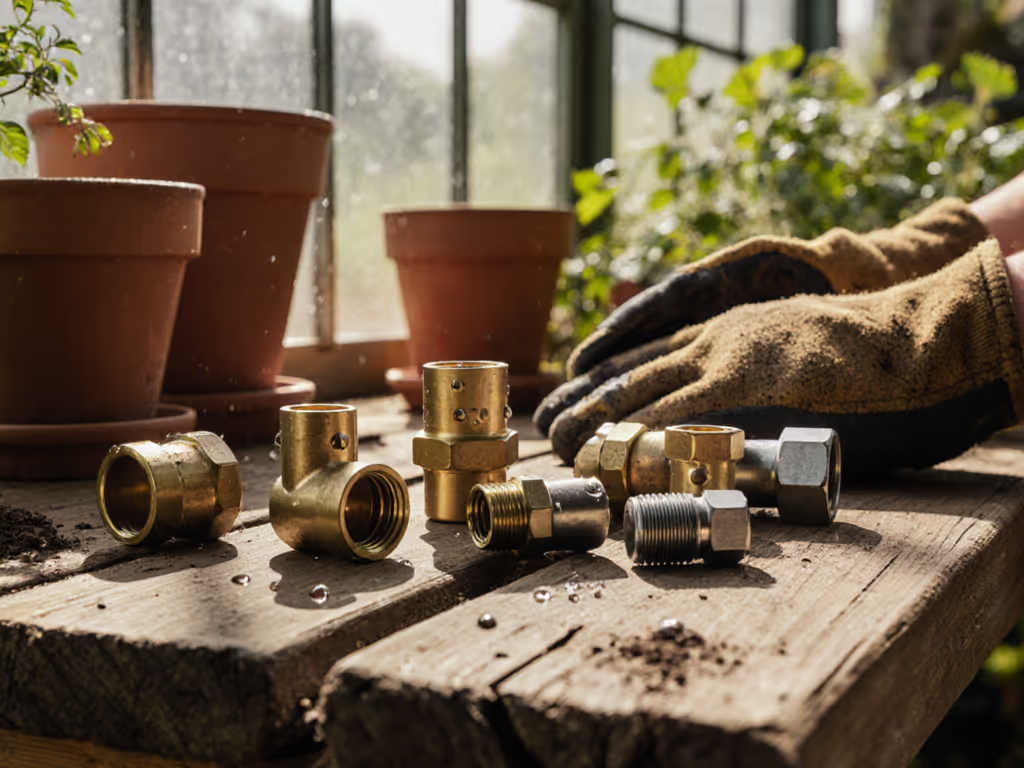
Best Space-Saving Coil Hoses: Garden Comparison
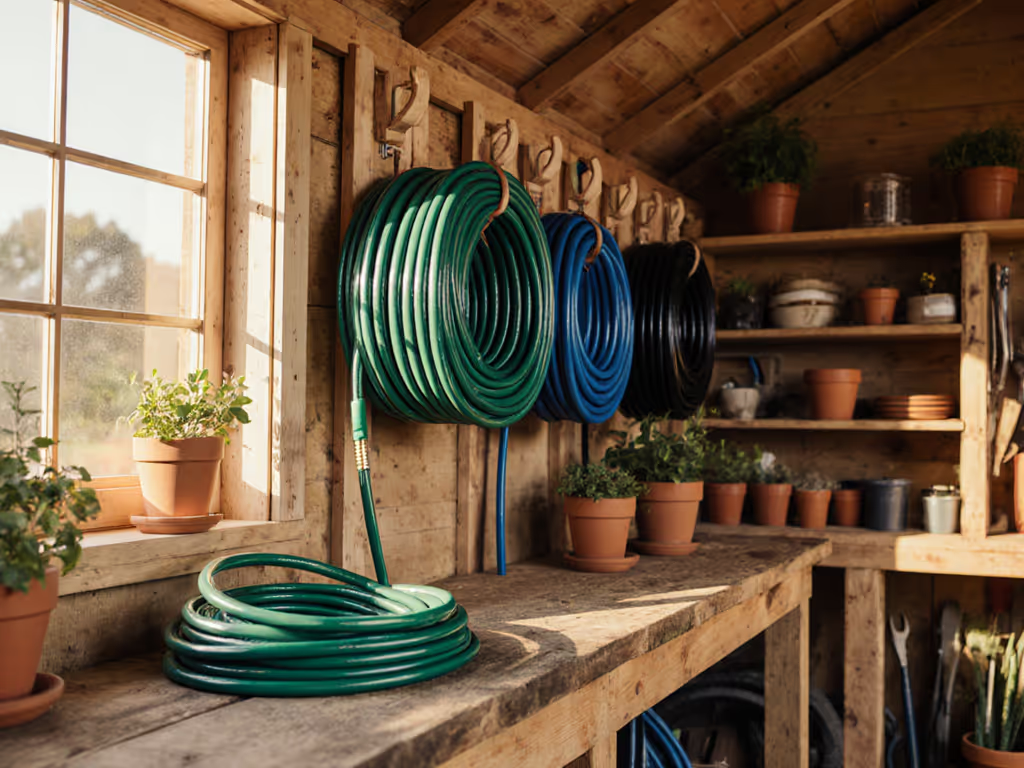
When your garden hose fights you instead of helping, even a simple watering task becomes a wrist-cramping chore. After years stewarding our community garden, I've seen too many well-meaning folks abandon their edible beds mid-season because heavy, kink-prone hoses stole their joy. That's why finding the best garden water hose isn't about specs alone, it's about respecting your body and your harvest. The right space-saving designs deliver a true food-safe path to the nozzle while solving your real storage headaches. Because comfort and safety are features, not accessories or afterthoughts.
Why Coil Hoses Belong in Your Garden Toolkit
Traditional rubber hoses might seem sturdy, but they often create more problems than they solve for suburban yards and raised-bed gardens. Imagine dragging 20 pounds of hose across delicate seedlings or fighting coil memory that turns your neat patio into a tripping hazard. That's where coil hoses shine because they are engineered for the way you actually move through your space.
The Real Benefits You'll Notice Immediately
- Space-saving garden hose magic: Coils shrink to 15-20% of their stretched length, tucking into corners where bulky reels won't fit
- Zero dragging fatigue: Most weigh under 2 pounds even when full (vs. 10+ for rubber hoses)
- Tangle-free deployment: No more wrestling stubborn loops around raised beds or furniture
- Gentle on plants: Flexible recoil won't scuff stems or knock over seedling trays
Unlike expandable hoses that burst under pressure, quality coil hoses maintain consistent water flow while resisting kinks, critical for delivering the steady drip your tomatoes crave. And crucially, they solve the storage headaches that plague 68% of gardeners according to the 2025 National Gardening Survey.
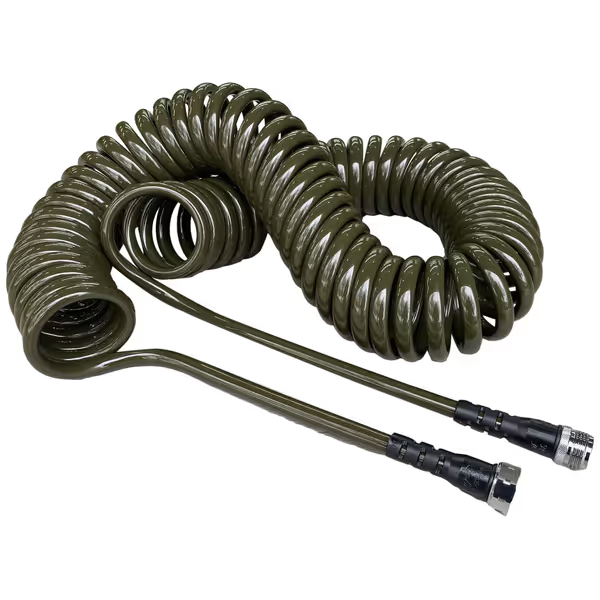
Water Right 300 Series Polyurethane Coil Garden Hose
Coil Hose Comparison: What Actually Matters for Your Backyard
Not all coil hoses are created equal. After testing dozens across our community garden's herb beds and senior watering stations, I've learned to prioritize these features:
1. Material Matters More Than You Think
Remember: A lightweight hose means nothing if it cracks in UV exposure or leaches chemicals near food crops.
- Polyurethane (like Water Right): Food-safe, stays flexible down to 20°F, won't trap minerals that cause hard water buildup
- PVC (budget coils): Stiffens in cold weather, prone to permanent kinks, often lacks drinking-water certification
- Rubber hybrids: Heavy but durable, best for large yards where you won't lift the hose frequently
Pro Tip: Squeeze the coiled section. Premium polyurethane springs back immediately; cheap PVC stays indented. This simple test reveals material quality faster than any spec sheet.
2. Fitting Safety Isn't Optional
Many "lead-free" hoses hide dangerous metals in their fittings. Always verify:
- NSF/ANSI Standard 61 certification (not just "lead-free" claims)
- Brass or stainless steel fittings (plastic cracks under pressure)
- 6-inch+ tails for smooth water transition (prevents pressure spikes that cause leaks)
I learned this the hard way when copper fittings stained our herb beds, and switching to certified fittings stopped the discoloration overnight. Your edible garden deserves nothing less than a guaranteed food-safe path to the nozzle. For a deeper dive into certifications and health risks, see our drinking water safe hose guide.
3. Real-World Weight vs. Marketing Claims
That "1.2 lb hose" in ads often doesn't include water weight. Here's what actually matters:
| Measurement | Why It Affects You |
|---|---|
| Dry Weight | Determines storage ease in sheds or closets |
| Wet Weight | Impacts wrist strain when watering hanging baskets |
| Coiled Size | Dictates if it fits under your deck or in a RV compartment |
For townhouse patios or senior gardens, prioritize wet weight under 2.5 lbs. Larger yards can handle slightly heavier models if they include swivel reel mounts.
Solving Your Top Coil Hose Pain Points
❄️ Cold Climate Concerns
If you've ever battled frozen, burst hoses in spring, pay attention: Not all coils handle freeze/thaw cycles. Look for:
- Polyurethane rated to -20°F (PVC cracks below 32°F)
- Seamless construction (no weak points at joints)
- Drain-back design (water exits completely when disconnected)
Test this yourself: Fill the hose, coil it tightly, then freeze overnight. Quality coils spring back; cheap ones develop permanent kinks.
🔌 Connection Chaos
Mismatched threads cause 71% of garden leaks (per RainPoint's 2024 irrigation study). Your coil hose must play nice with:
- Standard 3/4" GHT spigots (U.S.) or 1/2" BSP (U.K.)
- Existing reels or Y-splitters (measure your current fittings!)
- Potable-water nozzles (requires 5/8" inner diameter minimum)
Never force connections. If fittings cross-thread, the hose isn't compatible. No amount of tape fixes mismatched standards.
♿ Accessibility Wins
Our garden's elders taught me that "ergonomic" isn't just buzzword, it's independence. For arthritis-friendly use:
- Choose coil diameters over 2" (fits larger hands comfortably)
- Prioritize swivel nozzles that rotate while watering
- Verify tail length (minimum 6" prevents wrist bending at spigot)
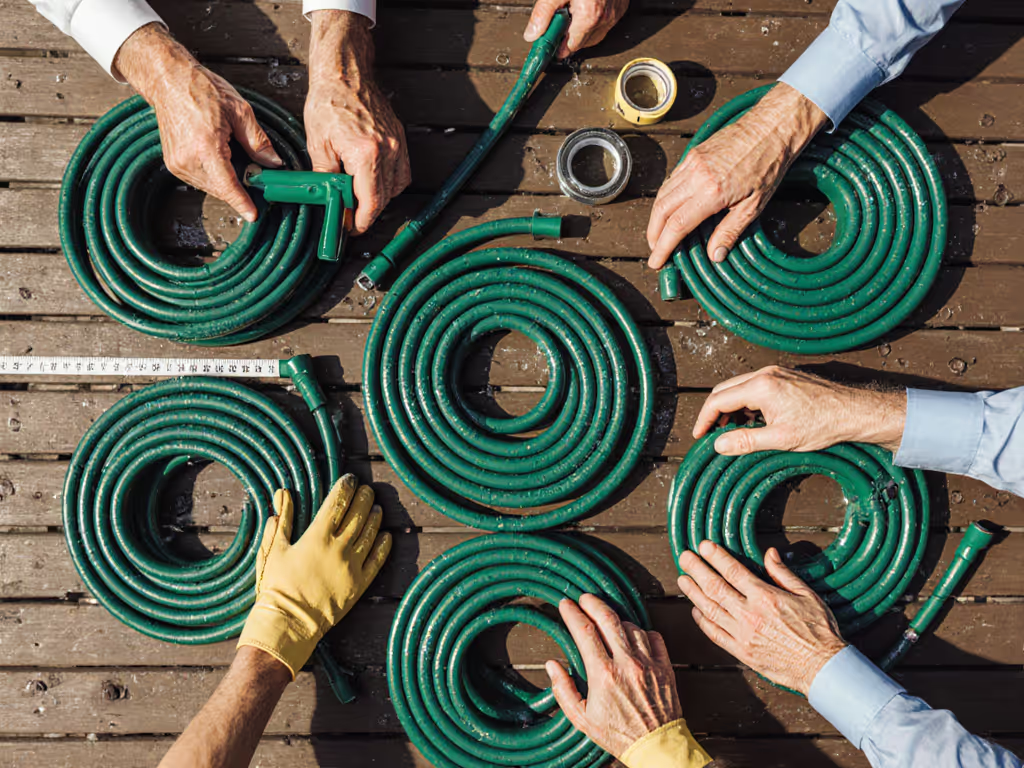
The Verdict: Matching Coil Hoses to Your Life
After seeing dozens of gardeners struggle, here's how to choose your best yard hose without overwhelm:
✅ For Edible Gardens & Small Spaces
Water Right 300 Series (25' x 3/8")
- Certified drinking-water safe (NSF 61)
- 1.7 lb wet weight, light enough for kids to handle
- 5-year warranty against bursts/kinks
- Stretches to 25' but coils to 14" for under-deck storage
Why it works: The polyurethane stays flexible in hot/cold zones while delivering full spigot pressure. Ideal for patios, RVs, and elder-friendly plots where safety and portability matter most.
⚖️ For Mixed-Use Yards (Lawn + Beds)
Orbit 25-Foot Coil (as seen in Bob Vila's review)
- Includes 8-pattern nozzle (but replace with swivel grip!)
- PVC body keeps costs low for casual use
- Best for seasonal homes where storage space is tight
Warning: Plastic fittings require frequent washer replacement. Not for edible gardens unless you add a certified lead-free adapter.
❄️ For Freeze/Thaw Zones
Flexi Hose Cold-Weather Coil (50')
- Retains flexibility down to -40°F
- Includes insulated spigot cover
- Extra-long 12" tail prevents ice traps
Critical check: Verify it's not just "expandable" but truly coil-style. Many cold-weather "coils" are expandable hoses with misleading marketing.
Beyond the Hose: Your Complete Comfort System
A great coil hose is just the start. For true reliability, pair it with:
- Wall-mounted reel at elbow height (reduces twisting strain)
- Swivel-grip nozzle (like Giraffe Tools' adjustable model)
- Lead-free Y-splitter (tested for 100+ PSI)
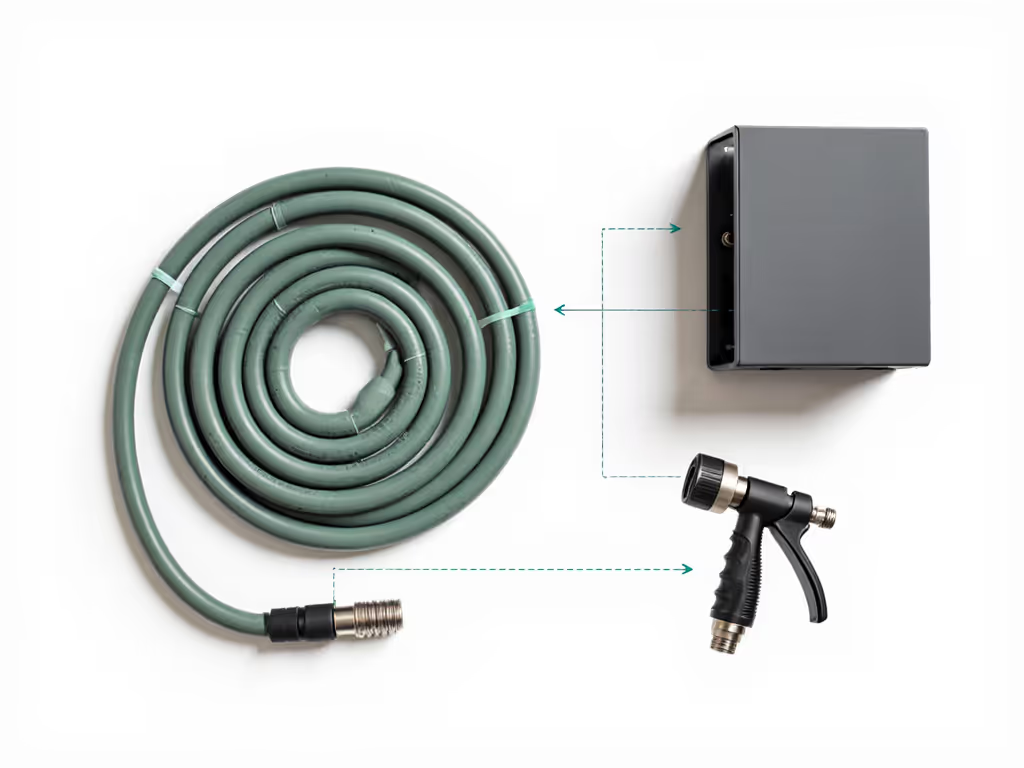
Your Next Step: Watering Without Worry
You deserve a good expandable hose alternative that doesn't sacrifice safety for convenience, a professional garden hose that works as hard as you do without stealing your joy. Remember that community garden story I hinted at earlier? The switch to a certified coil hose didn't just save our wrists, it saved our heirloom basil crop from contamination worries.
This isn't about finding the cheapest hose. It's about claiming hours back in your week, confidence in your harvest, and freedom from seasonal replacements. When your tools respect your body and your soil, gardening becomes the peaceful ritual it should be.
Comfort and safety are features, not accessories or afterthoughts.
Ready to see coil hoses in action? Explore how different lengths perform across yard sizes in our interactive garden mapping tool, plus get our seasonal storage checklist to prevent winter damage.
Related Articles

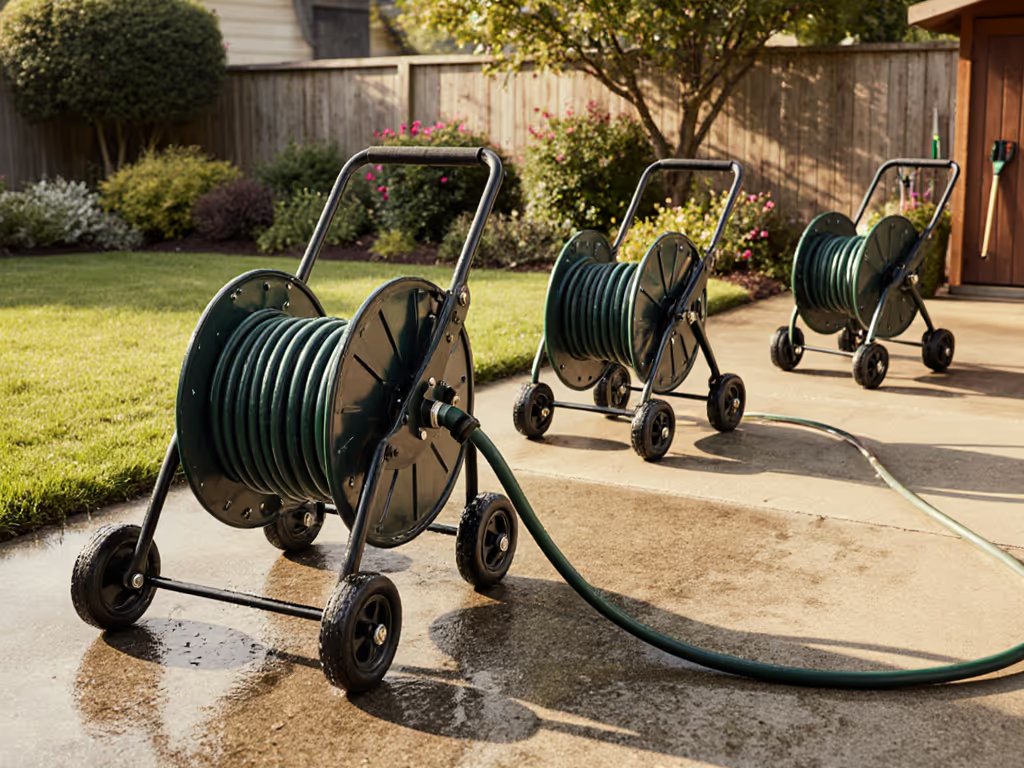
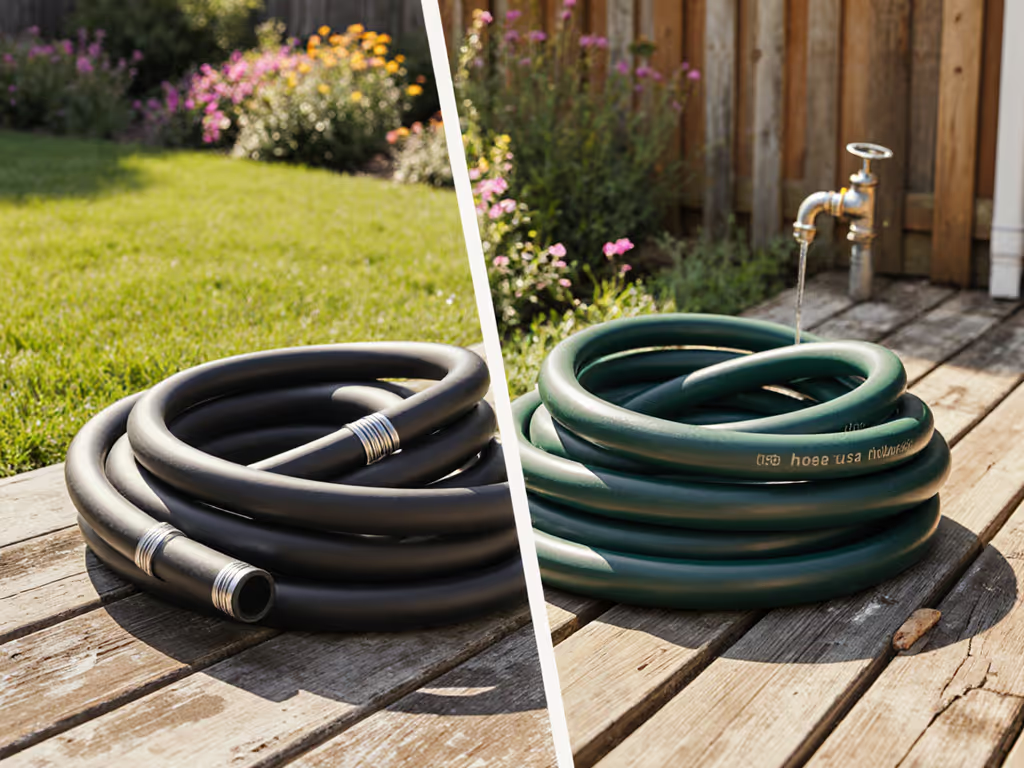
Modern Hybrid vs Traditional Rubber Garden Hose: Which Lasts?
Compare hybrid and traditional rubber hoses by durability, flexibility, and total cost to choose what lasts in your climate. Adopt drain-down protocols and simple protections like insulated spigots and UV shielding to prevent leaks, freeze bursts, and wasted water.
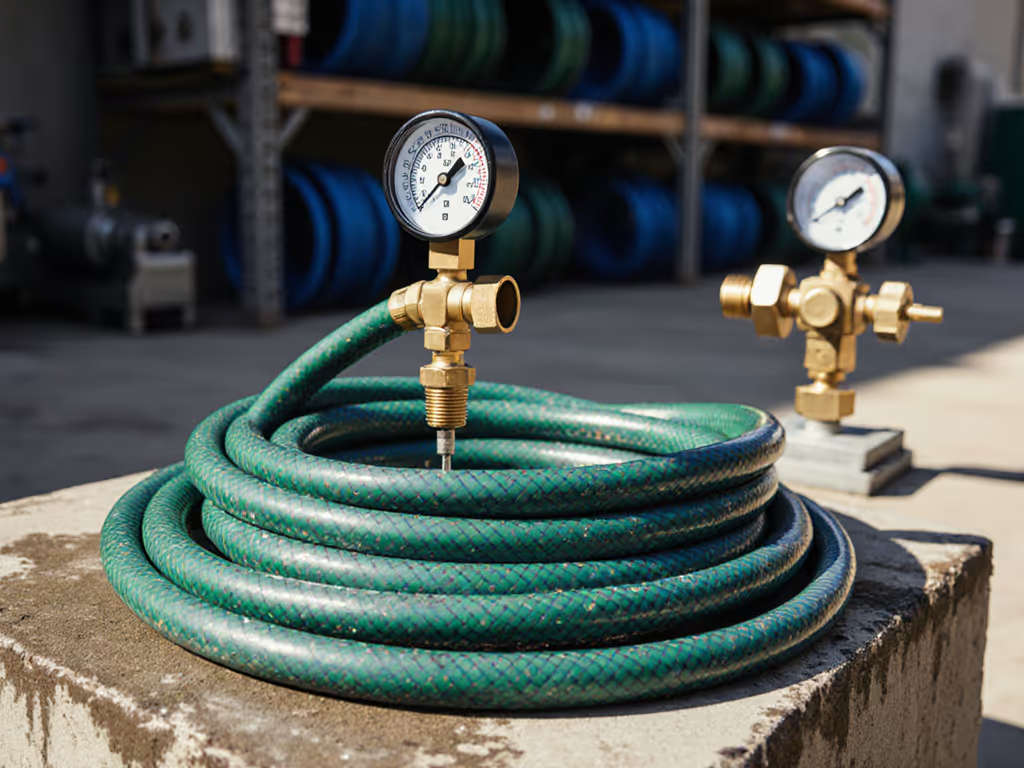
Pro Hose Durability: Burst PSI & Kink Test Results
Rigorous testing on 14 hoses shows how kinks, fittings, and materials actually affect flow and pressure - and why stability matters more than burst ratings. Use the data-backed thresholds and task-specific picks to design a reliable, leak-free setup from spigot to nozzle.
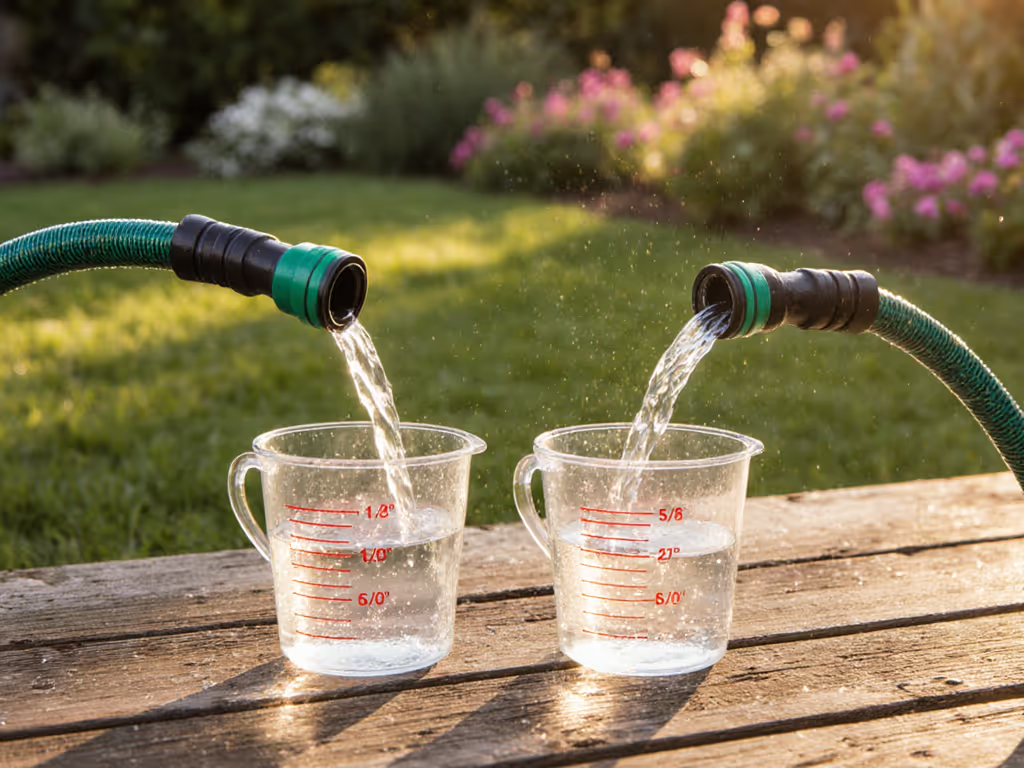
1/2 Inch vs 5/8 Inch Garden Hose Flow Rate Comparison
Learn why diameter matters more than length - 5/8-inch hoses deliver about 70% more flow than 1/2-inch - and when each size makes sense. Use a quick bucket test and task-based guidelines to size your hose for your yard, prevent pressure drop, and avoid costly do-overs.
